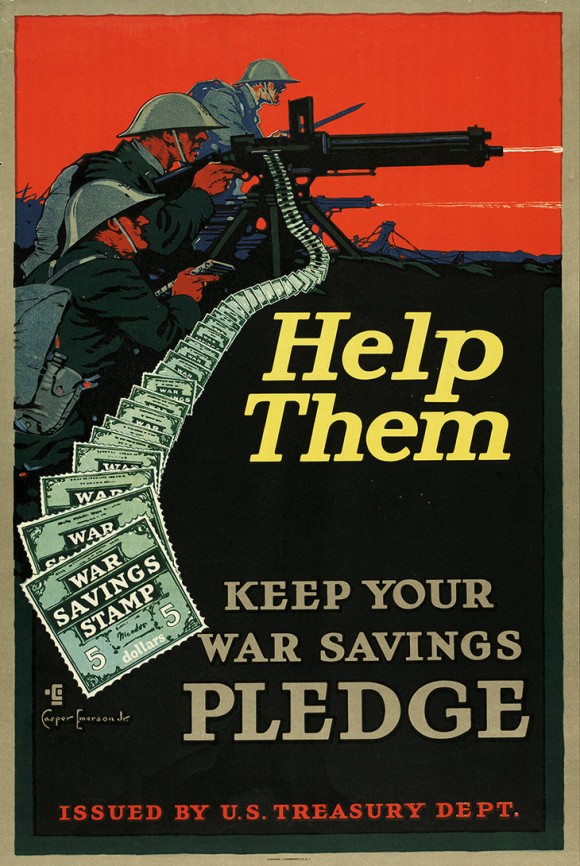“Over There . . . And Here,” an expeditionary exhibition on World War I, is on display September 18 through January 9, in The Eberly Family Special Collections Library, 104 Paterno Library, Penn State University Park. Hours are Monday–Thursday, 8:00 a.m.–6:00 p.m.; Friday, 8:00 a.m.–5:00 p.m.; and Sunday, 1:00–5:00 p.m., through December 21.
 The exhibition documents the World War I experience though the rich primary resource collections in the Special Collections Library and includes as a centerpiece World War I patriotic and propaganda posters, now available as a digital collection. Popular sheet music for songs that defined the Great War generation are on display, as well as rare books, pictorial publications, photograph collections documenting the World War I experience at home and abroad. Selections from the “Ernest Hemingway Letters to His Family Collection” highlight the central role that the war played in shaping Hemingway’s worldview and maturation as a writer and intellectual. The impact of the war on Penn State and Centre County is chronicled through photographs and collections contained within the Penn State University Archives.
The exhibition documents the World War I experience though the rich primary resource collections in the Special Collections Library and includes as a centerpiece World War I patriotic and propaganda posters, now available as a digital collection. Popular sheet music for songs that defined the Great War generation are on display, as well as rare books, pictorial publications, photograph collections documenting the World War I experience at home and abroad. Selections from the “Ernest Hemingway Letters to His Family Collection” highlight the central role that the war played in shaping Hemingway’s worldview and maturation as a writer and intellectual. The impact of the war on Penn State and Centre County is chronicled through photographs and collections contained within the Penn State University Archives.
A gallery talk, “Food Will Win the War: The US Food Administration and ‘Conspicuous Conservation,’ 1917-1919,” by Professor Justin Nordstrom, will be presented on October 9, 4:00 p.m., in Foster Auditorium, 102 Paterno Library. Nordstrom is an associate professor of history at Penn State Hazleton.
This year marks the 100th anniversary of the start of the epic conflagration known simply to its generation as the Great War (1914-1919). Global in reach and transformative of world history and culture in the twentieth century, World War I re-set national boundaries and unleashed the horrors of modern warfare and technology in service to the war machine. America’s late entry into the war in April 1917 and mass mobilization to aid the allied cause turned the tide of the war. Nearly five million Americans served during the Great War—three million selected in the country’s first universal draft. For the first time women were permitted to serve and thousands joined the ranks of the U.S. Navy and Marines in combat support, as well as the U.S. Army and Navy nurse corps. Over 350,000 African-Americans served in ranks although in segregated units. Two million American “doughboys” fought on the European continent and America sustained over 300,000 casualties, including 116,000 dead.
On the home front Americans became familiar with foreign place names such as Verdun, the Somme, Meuse-Argonne and Ypres. Rationing of food and conservation of critical energy resources became the norm and a patriotic duty. The need to plan and organize the logistics of war production led to the federal government’s operation of the nation’s railroad system, recognition of labor unions in key industries and experimentation with centralized economic planning. The establishment of the Committee on Public Information (Creel Committee) shaped and harnessed American wartime public opinion. It also brought into question the government’s use and dissemination of wartime propaganda on a vast scale as well as the suppression of dissenting views on the Great War.
For additional information about this exhibition and gallery talk or if you anticipate needing accessibility accommodations or have questions about the physical access provided, please contact Dr. James P. Quigel at jpq1@psu.edu or 814-863-3181.

